
International Journal of Biology and Chemistry
Scope & Guideline
Catalyzing Scientific Progress Across Biological and Chemical Realms
Introduction
Aims and Scopes
- Biological Interactions and Ecological Studies:
Research focusing on the interactions between various biological entities, such as plants, animals, and microorganisms, particularly in ecological contexts, is a core focus. This includes studies on plant growth-promoting bacteria, the impact of environmental factors on species, and the ecological roles of various organisms. - Chemical Analysis and Characterization:
The journal publishes works that involve the chemical analysis of biological samples, including the determination of chemical constituents in plants and other natural materials. This includes methodologies such as neutron activation analysis and chromatography, which are pivotal in understanding the biochemical properties of substances. - Phytochemistry and Natural Products:
There is a strong emphasis on the study of phytochemicals, their extraction, characterization, and biological activities. This includes the investigation of medicinal plants and their potential therapeutic effects, as well as the analysis of essential oils and other bioactive compounds. - Biotechnology and Genetic Studies:
Research in this area covers biotechnological applications and genetic studies, including molecular phylogenetics, the use of genetically modified organisms, and the exploration of genetic resistance in crops. This is vital for agricultural advancements and understanding genetic diversity. - Environmental and Agricultural Chemistry:
The journal addresses issues related to environmental chemistry, including the study of pollutants, waste management, and the chemical properties of agricultural products. This includes the examination of fertilizers and their impurities, as well as the effects of agrochemicals on ecosystems.
Trending and Emerging
- Environmental Sustainability and Bioremediation:
Recent publications show a growing interest in environmental sustainability, particularly in bioremediation techniques using natural materials to address pollution. This trend is crucial as global environmental concerns rise. - Nanotechnology and Advanced Materials:
There is an increasing focus on the application of nanotechnology in biological and chemical research, including the development of nanocomposites and their use in water purification and as biological agents. This reflects the broader scientific trend towards nanotechnology and its applications. - Molecular Mechanisms of Disease and Therapy:
Research exploring the molecular mechanisms underlying diseases, particularly neurodegenerative conditions like Alzheimer's, is trending. This area is significant due to its implications for developing targeted therapies. - Plant-Microbe Interactions and Agricultural Biotechnology:
The investigation of beneficial plant-microbe interactions is gaining prominence, highlighting the role of microorganisms in agriculture. This is linked to broader interests in sustainable agriculture and enhancing crop resilience. - Innovative Drug Development and Pharmacology:
There is a noticeable trend in research aimed at developing novel drugs and exploring the pharmacological properties of new compounds. This reflects an ongoing need for effective treatments in medicine.
Declining or Waning
- Traditional Medicinal Practices:
Research related to traditional medicinal practices and indigenous plants has seen a decline. While it was once a prominent area of study, recent papers indicate a shift towards more modern and scientifically rigorous approaches to pharmacology and biochemistry. - Basic Studies on Common Agricultural Pests:
Studies focusing solely on common agricultural pests and their management techniques have become less frequent. The emphasis seems to have shifted towards integrated pest management and ecological approaches rather than traditional pesticide studies. - Generalized Chemical Synthesis Techniques:
Research on generalized chemical synthesis methods without specific applications or innovative approaches has waned. The trend is moving toward more applied chemistry, particularly in areas that intersect with biological research and environmental concerns.
Similar Journals
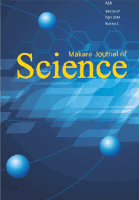
Makara Journal of Science
Bridging theory and practice through impactful research.Makara Journal of Science, published by UNIV INDONESIA, is an esteemed open-access journal that has been contributing to the field of scientific research since 2007. With an ISSN of 2339-1995 and E-ISSN of 2356-0851, this journal plays a crucial role in disseminating knowledge across various disciplines including Agricultural and Biological Sciences, Biochemistry, Genetics and Molecular Biology, Chemistry, Materials Science, and Physics and Astronomy. The journal operates out of Depok, Indonesia, and aims to foster international collaboration and bridge the gap between theory and practice through high-quality research publications. As of 2023, it holds a Q3 ranking in Agricultural and Biological Sciences and Q4 in several other categories, reflecting its steady growth and dedication to quality. Researchers, students, and professionals can access a wealth of pioneering studies that not only deepen understanding in their respective fields but also broaden interdisciplinary dialogue within the global scientific community. Join your peers and contribute to the ongoing discourse in this vital area of scientific exploration.
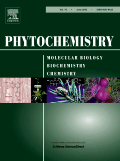
PHYTOCHEMISTRY
Diving Deep into the World of Plant-Derived CompoundsPHYTOCHEMISTRY is a prestigious journal published by PERGAMON-ELSEVIER SCIENCE LTD, addressing the critical intersections of biochemistry, horticulture, and plant science. With an ISSN of 0031-9422 and an E-ISSN of 1873-3700, it serves as a key resource for researchers seeking to deepen their understanding of the chemical compounds derived from plants and their implications in various biological systems. The journal operates without an open access option and is headquartered in the United Kingdom. Featuring a commendable impact factor, PHYTOCHEMISTRY ranks notably in various Scopus categories, including Q1 in Horticulture and Q2 in Biochemistry. Its rich archive, dating from 1961 to 2025, allows for comprehensive exploration of past and current research trends, making it an essential platform for academics, professionals, and students aiming to contribute to the ever-evolving field of plant sciences. By fostering a collaborative exchange of novel ideas and diverse perspectives, PHYTOCHEMISTRY plays a vital role in advancing knowledge and innovation across its thematic spectra.

Jordan Journal of Chemistry
Exploring Frontiers: A Platform for Chemistry Discovery and Dialogue.The Jordan Journal of Chemistry is a prominent publication dedicated to advancing the field of chemistry in Jordan and beyond. Published by the Yarmouk University Deanship of Research & Graduate Studies, this journal serves as a platform for researchers, educators, and practitioners to disseminate their findings in a variety of chemistry sub-disciplines. Although currently classified in Q4 of miscellaneous chemistry and ranking within the 9th percentile according to Scopus, the journal plays a crucial role in fostering academic dialogue and collaboration in the region. With its ISSN 1814-9111 and E-ISSN 2079-7249, the Jordan Journal of Chemistry offers open access to researchers from diverse backgrounds, ensuring that critical research is both accessible and impactful. By bridging local studies with global scientific advancements, this journal is poised to contribute significantly to the growth and recognition of chemistry as a key scientific discipline in the region, with convergence efforts set from 2020 to 2024.

Applied Biological Research
Cultivating Knowledge in Applied Biological SciencesApplied Biological Research is a dynamic journal issued by the CENTRE ADVANCEMENT APPLIED SCIENCES, specializing in the interdisciplinary fields of biochemistry, genetics, and molecular biology. With its ISSN 0972-0979 and E-ISSN 0974-4517, this journal serves as a critical platform for the dissemination of peer-reviewed research that addresses pressing challenges and innovations within biological sciences. Although currently it does not adopt an Open Access model, it is dedicated to fostering academic discourse through rigorous publication practices. The journal's impact is underscored by its Scopus rankings, which place it in the 4th and 2nd percentiles in respective categories, emphasizing its emerging influence in the scientific community. Covering research from 2020 to 2024, Applied Biological Research is positioned as an essential read for researchers, professionals, and students seeking to stay at the forefront of biological research and application. Based in the beautiful region of Jammu & Kashmir, India, this journal is committed to advancing applied sciences through innovative research and outreach.
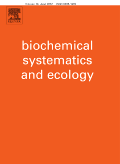
BIOCHEMICAL SYSTEMATICS AND ECOLOGY
Connecting Biochemical Insights with Ecological UnderstandingBIOCHEMICAL SYSTEMATICS AND ECOLOGY, published by PERGAMON-ELSEVIER SCIENCE LTD, is a pivotal journal dedicated to the exploration of the intricate relationships between biochemical processes and ecological factors. With its inception in 1973 and continued activities projected to extend into 2024, the journal serves as a vital resource for researchers and professionals in the fields of biochemistry and ecology. The journal, available in both print (ISSN: 0305-1978) and electronic formats (E-ISSN: 1873-2925), enjoys an esteemed reputation, reflected in its category quartiles of Q4 in Biochemistry and Q3 in Ecology, Evolution, Behavior and Systematics for the year 2023. Despite its varying impact across categories, it remains significant in advancing knowledge and fostering collaboration in the biological sciences. The emphasis on systematic and ecological studies underscores the journal’s commitment to addressing contemporary challenges and innovative research in the realm of biochemical applications to ecological dynamics. As such, it appeals to a broad audience of researchers, professionals, and students eager to contribute to and learn from this interdisciplinary field.

Moroccan Journal of Chemistry
Advancing Chemistry Knowledge, One Article at a Time.Moroccan Journal of Chemistry, published by the University Mohammed Premier Oujda, serves as a pivotal platform for researchers and professionals in the field of chemistry, particularly focusing on diverse and emerging areas within the discipline. Established in 2018, this open-access journal facilitates widespread dissemination of scholarly articles, ensuring that cutting-edge research reaches a global audience. With an ISSN of 2351-812X and categorized in the Q3 quartile for miscellaneous chemistry in 2023, the journal maintains rigorous peer-review standards while fostering an inclusive environment for scientific dialogue. Located in Morocco, it aims to bridge local and international research communities, contributing to the advancement of knowledge in chemistry. As it continues to grow, the Moroccan Journal of Chemistry remains an essential resource for students, educators, and professionals eager to stay abreast of the latest developments in the field.

Revista Virtual de Quimica
Connecting Researchers to Transformative Chemistry KnowledgeRevista Virtual de Quimica, published by the SOC BRASILEIRA QUIMICA, is a dynamic online journal based in Brazil, dedicated to promoting innovative research in the field of chemistry and related disciplines. Established in 2011, the journal has made significant strides in contributing to the academic landscape, receiving an impact factor that highlights its relevance, although it currently holds a Q4 quartile ranking in the miscellaneous category of Chemistry and Mathematics as of 2023. The journal is committed to open access, ensuring that scholarly articles are readily available to researchers, professionals, and students worldwide. Its focus encompasses diverse areas within general chemistry, aiming to foster knowledge sharing and collaboration among the scientific community. By providing a platform for high-quality research publications, Revista Virtual de Quimica stands as an essential resource for advancing chemical sciences and encouraging interdisciplinary studies.
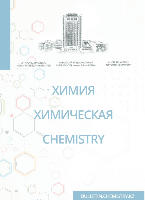
Chemical Bulletin of Kazakh National University
Advancing Chemistry through Open Access InnovationThe Chemical Bulletin of Kazakh National University is a prominent open-access journal dedicated to advancing the field of chemistry. Published by AL-FARABI KAZAKH NATIONAL UNIVERSITY, this journal serves as a vital platform for disseminating original research, reviews, and innovative findings in diverse areas of chemistry since its transition to open access in 2012. With an ISSN of 1563-0331 and an E-ISSN of 2312-7554, the journal aims to reach a global audience, fostering knowledge exchange among researchers, professionals, and students in the scientific community. The publication seeks to promote high-quality research that contributes to the understanding and application of chemical sciences, particularly in the context of Kazakhstan and the broader Central Asian region. Given the journal's commitment to making research freely accessible, it stands as an invaluable resource for anyone engaged in the study and application of chemistry.

Vestnik Tomskogo Gosudarstvennogo Universiteta-Biologiya
Empowering Researchers Through Open Access to Vital DiscoveriesVestnik Tomskogo Gosudarstvennogo Universiteta-Biologiya is a prominent peer-reviewed journal dedicated to advancing knowledge in the fields of Agricultural and Biological Sciences, Biochemistry, and Environmental Science, published by TOMSKIJ GOSUDARSTVENNYI UNIV in the Russian Federation. With an ISSN of 1998-8591 and an E-ISSN of 2311-2077, this journal serves as a vital platform for researchers to disseminate findings that encompass diverse biological disciplines. Although currently categorized in the fourth quartile across several fields, including Agricultural and Biological Sciences (Q4) and Environmental Science (Q4), the journal is committed to improving its academic impact and visibility. Its publication spectrum includes significant contributions from both local and international scholars, fostering a rich exchange of ideas and research methodologies. Access to the journal’s content is unrestricted, providing valuable resources for students, professionals, and researchers alike. As the journal converges its focus from 2018 to 2024, it aims to enhance its academic stature while contributing rigorously to contemporary biological research.
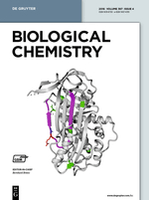
BIOLOGICAL CHEMISTRY
Pioneering Research in Clinical and Molecular BiochemistryBIOLOGICAL CHEMISTRY, published by WALTER DE GRUYTER GMBH, is a premier journal based in Germany focusing on the ever-evolving fields of Biochemistry, Clinical Biochemistry, and Molecular Biology. With a robust reputation reflected in its top quartile rankings (Q1) within both Biochemistry and Clinical Biochemistry categories, and a commendable Q2 ranking in Molecular Biology for 2023, this journal stands as a vital resource for researchers, professionals, and students alike. The journal spans a rich history dating back to 1881 and embraces contemporary scientific discourse, ensuring accessibility to critical findings and advances that shape the biological sciences. Although it is not an open-access journal, its impactful contributions and relevant insights continue to serve the academic community. With its ISSN 1431-6730 and E-ISSN 1437-4315, BIOLOGICAL CHEMISTRY remains committed to fostering a deeper understanding of chemical processes in biological systems, driving innovation and research excellence into the future.